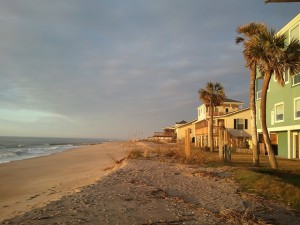S.C. Encyclopedia | Located between the mouths of the North and South Edisto Rivers south of Charleston, Edisto Island is a Lowcountry Sea Island of approximately sixty-eight square miles. The island is shielded from the Atlantic Ocean by Edisto Beach, a barrier island municipality contained in Colleton County and linked to Edisto Island by a causeway.
 Edisto Island derives its name from the Edisto Indians, the island’s initial inhabitants (an Indian mound built by the Edistos survives at Edisto Beach State Park). In the mid-1500s Spanish settlers arrived on the island they called “Oristo” and established a Jesuit mission. Englishman Robert Sandford explored Edisto in 1666, and a decade later the “Edistow” deeded the island to the Lords Proprietors. The Spanish raided an English settlement on Edisto in 1686, but Anglo settlers and their African slaves remained and increased in the ensuing decades. Edisto Presbyterian Church was organized in 1710 and Trinity Episcopal Church in 1774.
Edisto Island derives its name from the Edisto Indians, the island’s initial inhabitants (an Indian mound built by the Edistos survives at Edisto Beach State Park). In the mid-1500s Spanish settlers arrived on the island they called “Oristo” and established a Jesuit mission. Englishman Robert Sandford explored Edisto in 1666, and a decade later the “Edistow” deeded the island to the Lords Proprietors. The Spanish raided an English settlement on Edisto in 1686, but Anglo settlers and their African slaves remained and increased in the ensuing decades. Edisto Presbyterian Church was organized in 1710 and Trinity Episcopal Church in 1774.
The salinity of the island’s wetlands inhibited rice production, but indigo production flourished in the mid–eighteenth century. From the late eighteenth century until the early twentieth century, Edisto Island was a center of Sea Island cotton production, until the boll weevil devastated the crop in the early 1920s. Edisto farmers thereafter produced cabbage, potatoes, cattle, and tomatoes. In 1920 the Dawhoo Bridge connected the isolated island to the mainland. The bridge subsequently was replaced by a high, fixed-span bridge.
– Excerpted from the entry by Ford Walpole. To read more about this or 2,000 other entries about South Carolina, check out The South Carolina Encyclopedia by USC Press. (Information used by permission.)



 We Can Do Better, South Carolina!
We Can Do Better, South Carolina!
























